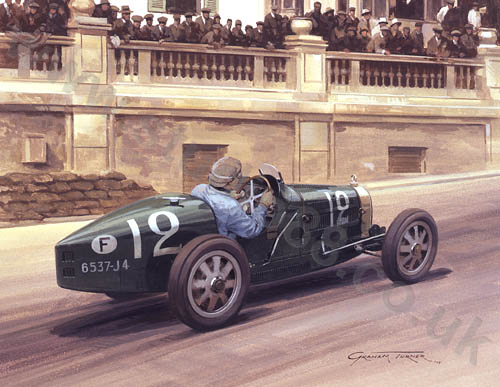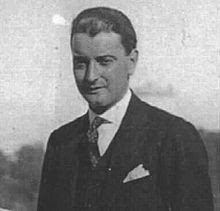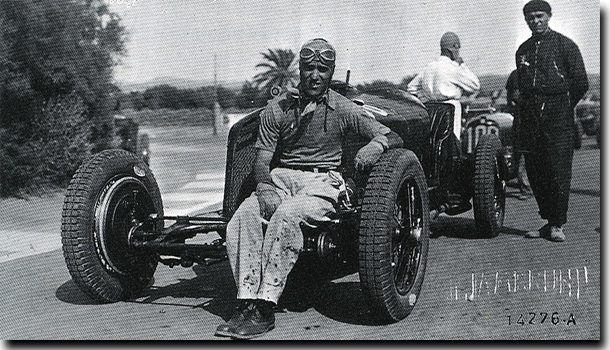- 7,113

- Lisboa
- FLAT_TWELVE
A short article from ESPNF1 made me curious about this Grand Prix driver I never heard of before. So I looked around for more info (GP driver turned war hero) and I'd say the story of this man's life - if all I found is true) is blockbuster material.
Especially love the part where it is mentioned that his fellow in the "resistance" period was his former nemesis on-track, Benoist. It's almost too unbelievable.
The short article in ESPNF1 is here:
http://en.espnf1.com/f1/motorsport/driver/12124.html
And the one I found, with more information, I found here:
http://www.girlracer.co.uk/motorspo...st-from-the-past-william-grover-williams.html
And is quoted below so to make sure you don't miss this amazing story. In my case, first paragraph is totally true. I never heard of this guy before:
Especially love the part where it is mentioned that his fellow in the "resistance" period was his former nemesis on-track, Benoist. It's almost too unbelievable.
The short article in ESPNF1 is here:
http://en.espnf1.com/f1/motorsport/driver/12124.html
And the one I found, with more information, I found here:
http://www.girlracer.co.uk/motorspo...st-from-the-past-william-grover-williams.html
And is quoted below so to make sure you don't miss this amazing story. In my case, first paragraph is totally true. I never heard of this guy before:
Kate WalkerWilliam Grover-Williams is one of the most important Grand Prix drivers youve never heard of.
War hero, racer, and winner of the inaugural Monaco Grand Prix, Grover-Williams has all but disappeared in the mists of time.
Born in France to an English father and a French mother, William Grover-Williams was brought up bilingual, with a childhood that saw him spend time in both countries. His intimate knowledge of France and French culture would serve him well in later life, when he was recruited by the Special Operations Executive to run Resistance campaigns in Occupied France.
But before he made a name for himself as a war hero Grover-Williams was honoured with the Croix de Guerre for his work organising the Chestnut network of SOEs F-section the debonair young man had a fine reputation as a Grand Prix driver.
Grover-Williams most notable on-track triumph was at the 1929 Monaco Grand Prix, the debut of the jewel in Formula 1s crown, which he won behind the wheel of a privately-entered Bugatti Type 35B. Permission to use the car came direct from Ettore Bugatti, but it was not a works entry. To emphasise this fact, Grover-Williams car was painted in British racing green, and not the typical pale blue of Bugatti. You cant see the colour of the car in the silent black and white clip below, but you can see footage of the entrants powering through the infamous Monaco tunnel.
The Monaco Grand Prix was far from Grover-Williams only racing success, however. Like many of his peers, Grover-Williams did not restrict himself to Grand Prix circuit racing: his career was a varied one that took in the Monte Carlo Rally, motorcycle racing, and hillclimbs, among other events.
Grover-Williams began racing motorbikes under the pseudonym W Williams when still a teenager; the pseudonym hid his activities from family notice, despite a string of victories. As soon as he had acquired the necessary funds, W Williams bought a second-hand Hispano-Suiza H6, which he entered in the 1925 Monte Carlo Rally. He was one of 32 finishers that year.
The Rally cemented Grover-Williams interest in racing, and he took advantage of the many hillclimbing events on offer in and around Monaco during the season. But the H6 was too hefty to be competitive against the lighter Delages, especially the one piloted by French racing superstar Robert Benoist. Determined to make a name for himself on the racing circuit, Grover-Williams set his sights on acquiring a Bugatti Type 35.
By late 1925, he had achieved his aim, although no one seems to know how a 22-year-old chauffeur without a trust fund managed to get the necessary money together. It has been suggested that he sweet-talked Ettore Bugatti into giving him a deal on a second-hand car, but this has not been confirmed.
But however he managed it, Grover-Williams spent the autumn of 1925 competing in hillclimbs behind the wheel of his coveted Type 35. Ironically, his first hillclimb victory came about in the 1926 Mont des Mules hillclimb, which he entered in his Hispano-Suiza.
1926 was a good year from Grover-Williams. He finished second in the Grand Prix de Provence, and earned a factory drive with the Sunbeam Talbot Darracq team in 1927. Hot on the heels of that personal victory, he convinced Ettore Bugatti to lend him a factory Type 35 for the Spanish Grand Prix. The race was not a success, but William Grover-Williams was beginning to establish himself as a force to be reckoned with in the European racing community.
The following year was not as impressive. Sunbeam withdrew from racing, citing financial difficulties, and it took Grover-Williams until October to convince Bugatti that he was worthy of a reserve role with the team. His one outing was at the inaugural British Grand Prix at Brooklands, a race won by Robert Benoist. Grover-Williams finished 20 laps down on the leader.
But in 1928, W Williams won the French Grand Prix behind the wheel of his privately-entered Bugatti. He would repeat the feat the following year, two months after his victory at the inaugural Monaco Grand Prix.
In 1931, again driving a Bugatti as a private entrant, Grover-Williams (and co-driver Caberto Conelli) won the 10-hour Belgian Grand Prix, back in the days when the Masta Straight and Kink made the Spa-Francorchamps track an even more fearsome beast than it is today. Two months later, he won the La Baule Grand Prix, the first of three consecutive victories at the infamous beach race, which saw cars powering along the sands.
At the end of the 1933 season, William Grover-Williams retired from motorsport. His plan was to enjoy his winnings and live a quiet life with his wife, Yvonne Aupicq, a former artists model with a passion for breeding Aberdeen terriers. But his life of peace and quiet with the occasional Paris visit spent selling Bugattis to the wealthy would come to an end in 1939.
When the Second World War broke out, Grover-Williams returned to England and enlisted in the Army. While there, he was recruited for the Special Operations Executive and sent to Paris the most dangerous place for an agent to organise the Chestnut network. Promised agents never arrived, so Grover-Williams recruited from the local population. His right-hand man was one Robert Benoist, his old nemesis from the racing days. The two worked together to organise weapons and agent drops, sabotage German efforts, and recruit more agents to the cause. On 2 August 1943, William Grover-Williams was apprehended by the Nazis. Following a lengthy interrogation by the SD in Paris, he was sent to the Sachsenhausen concentration camp, where he was executed on 23 March 1945, weeks before the war in Europe ended.
***
Anyone interested in further information on William Grover-Williams and his fellow SOE racers should read Joe Sawards The Grand Prix Saboteurs, the best book on the topic. Even the research bods at Beaulieus National Motor Museum Archives say Saward knows more about the topic than they do. By Kate Walker









